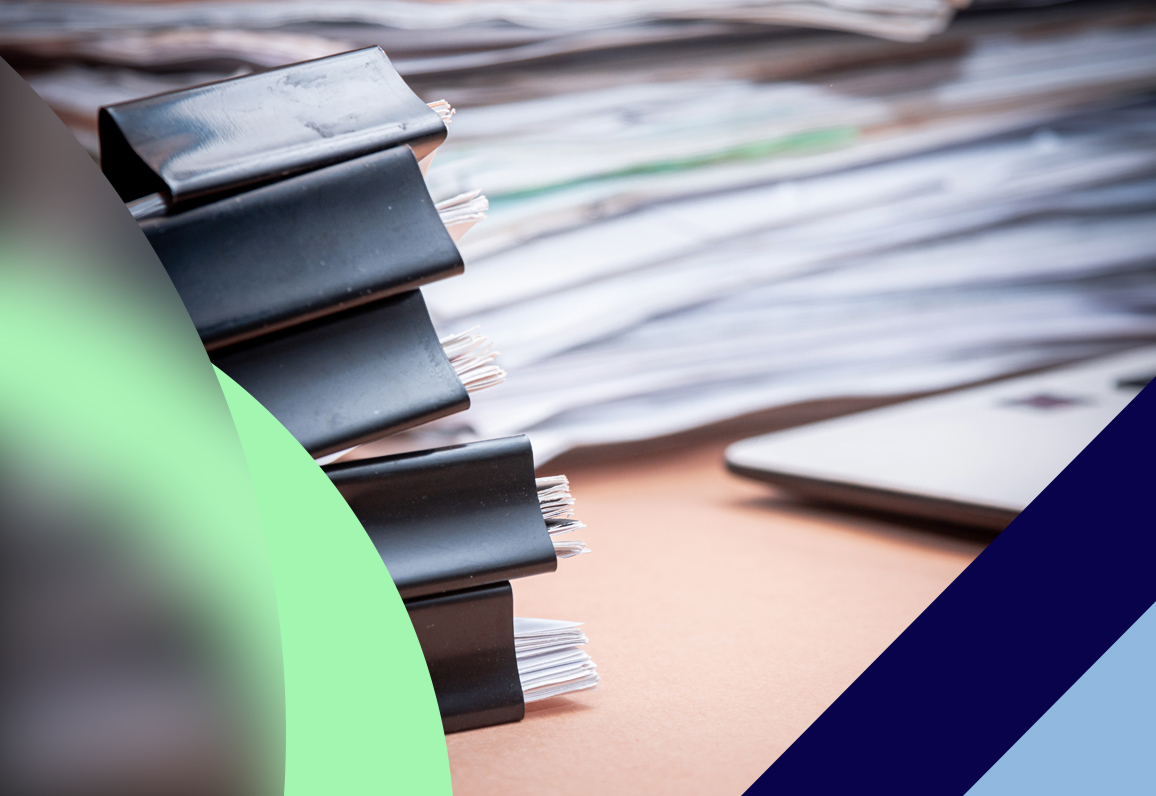Optimizing validation processes for digitization is crucial for organizations that want to take full advantage of the benefits of digital transformation. The traditional paper-based processes are slow, error-prone, and resource-intensive. Digitization, however, allows organizations to streamline their processes, reduce costs, and increase efficiency. Learn how in our Digital Validation Handbook.
Digitization refers to the process of converting analog information into digital format. This includes data, images, and other forms of content that can be stored and accessed electronically. Digitization involves the use of technology to capture, process, and store information in a way that is easily accessible, searchable, and shareable.
Digitization is becoming increasingly important in highly regulated industries as organizations strive to modernize their operations, keep up with technological advancements of the Industry 4.0 revolution, stay competitive, and underpin commercial performance. Digitization allows for greater efficiency, accuracy, consistency, and speed in processing information, and increased accessibility and flexibility in sharing information.

Limitations of paper-to-glass approach
The “paper-to-glass” concept refers to the transition from paper-based processes to digital processes. It involves the use of electronic devices—such as computers, tablets, and smartphones—to access and process information instead of using paper-based documents.
Paper-to-glass, in general, focuses on digitizing documents to make validation more efficient using scanners to help streamline document transfer and readability. The process typically involves scanning paper documents and transmitting their digital files to stakeholders. Some solutions allow for editing of a “layer” on top of the document, whereas others require the document to be printed, manipulated, and then rescanned.
This approach can remove the storage headaches of fully paper-based systems and greatly speeds the hand off of key documents, but it does not necessarily result in increased efficiency or accuracy. The scanning required means cycle times will still be longer than a fully digital solution, and data integrity risks remain as key aspects (such as approval signatures) happen offline and may not be time stamped accurately. This also does little to utilize data within the documents, which limits the efficacy of a paper-to-glass solution. In fact, it can even create new limitations, such as:
- A lack of integration with other systems
- Challenges in managing and storing electronic documents; and
- Ensuring data security
Lack of integration with other systems
Many highly regulated organizations still rely on multiple systems and applications to manage their processes, such as quality management systems (QMS), Laboratory Information Management Systems (LIMS), Enterprise Resource Planning (ERP) systems, and Document Management Systems (DMS), as well as other digital tools.
If these systems are not integrated, it can lead to inefficiencies, duplicate data entry, and errors. For example, if information is entered into multiple systems, it can be difficult to ensure that the information is consistent and up to date across all systems.
To overcome this limitation, organizations need to implement strategies to integrate their systems and applications. This can involve the use of middleware or application programming interfaces (APIs) to connect different systems and allow for seamless data transfer and sharing.
Challenges in managing and storing electronic documents
Another limitation of the paper-to-glass approach is the difficulty in managing and storing electronic documents. While electronic documents can be easily shared and accessed, they can also be difficult to organize and manage, particularly if there are large volumes of documents.
Organizations need to implement strategies to manage and store electronic documents effectively. This can involve the use of document management software, which allows for easy organization, search, and retrieval of documents. It can also involve the implementation of policies and procedures to ensure that documents are properly labeled, categorized, and stored.
Ensuring data security
One of the biggest concerns with digitization is data security. Electronic documents are vulnerable to hacking, data breaches, and other forms of cyber threats. In addition, electronic documents can be easily copied, shared, and distributed, which can increase the risk of unauthorized access and data leaks.
To address these concerns, organizations need to implement strategies to ensure data security and privacy. This can involve the use of encryption and other security measures to protect electronic documents from unauthorized access. It can also involve the implementation of policies and procedures to ensure that documents are only accessible to authorized personnel and that data is stored and transmitted securely.
A holistic paper-to-digital approach
To fully optimize processes for digitization, organizations need to go beyond the paper-to-glass concept and implement strategies to streamline their processes, integrate their systems and applications, and ensure data security. This involves a holistic “paper-to-digital” approach that considers the entire digital transformation journey, from analyzing current processes to implementing new technology and workflows.
Before implementing any digital transformation strategy, it is important to analyze the current processes and identify pain points. This involves assessing how information is currently processed, where bottlenecks occur, and what areas are most in need of improvement.
By analyzing current processes, organizations can identify inefficiencies and opportunities for improvement. This can help to prioritize digital transformation efforts and ensure that the solution implemented addresses the most pressing pain points.
Kneat’s Professional Services team works with our customers to set up their work processes in Kneat Gx before implementation. This involves process analysis, customized process mapping, and configuration on the Kneat Platform –including, but not limited to, the development of a workspace, workspace folders, document types, subject categories, document templates, library object templates, properties, section group templates, user accounts, user access levels, user groups, and approval templates.
What Is process mapping?
Process mapping is a technique used in process digitization to create a visual representation of a specific process, which helps in identifying potential areas of improvement, increasing efficiency and reducing errors.
At Kneat, customized process mapping involves documenting each step of a customer’s process in a clear and concise manner. This may involve using flow charts, diagrams, or other visual aids to illustrate the process. Customized process mapping is an important tool in digitization as it allows organizations to identify areas for improvement and develop strategies to optimize their processes before implementation. By doing so, they can increase efficiency, reduce errors, and ultimately improve their bottom line.
End-to-end digital validation technology
Investing in appropriate technology is a key part of digital transformation. Organizations should look for an end-to-end digital validation lifecycle management solution that is aligned with their goals and objectives and that can be easily integrated into their existing systems and applications.
The technology should be scalable and flexible, as this will allow organizations to adapt to changing needs and requirements. It should also be user-friendly and easy to use, as this will increase adoption across the organization and ensure that the technology is used to its full potential.
The biggest thing with Kneat was that it was easy to use…Kneat just seemed like it was a faster learning curve, and that people would be able to just jump in and use it…that is the experience that we have had, and we are really happy with our selection.
– Manager, Quality Assurance Validation at ElevateBio, Laura Berberian
Benefits of digitizing validation processes
When a document becomes fully digital, the full advantages of technology are unlocked including automation, real-time visibility, controlled templates, rapid retrieval and traceability, error-proof handling for data integrity, and audit readiness.
Updates to a particular document or process can be pushed to all relevant documents instantly, removing the need to dig up buried documents or redo work. The key to benefiting from this approach is understanding the value of dynamic data.
In a digital solution—such as Kneat Gx—both documents and data are manipulable, accessible, and stored electronically. This has wide scale impacts on validation activities, broadly ensuring compliance with data integrity regulations such as CFR 21 Part 11 and drastically reducing validation cycle times by removing barriers caused by paper-based or manual activity.
By automating manual processes, organizations can streamline their operations and reduce the amount of time and labor-hours it takes to complete tasks. Digitization can also enable employees to work remotely and collaborate more effectively, which can increase productivity and efficiency. This can be particularly important in highly regulated industries that require high collaboration and teamwork.
Digital validation can also reduce the amount of paper and physical storage space required, which can result in significant cost savings.
Digitization can also improve decision-making by providing organizations with access to real-time data and analytics. By digitizing processes such as data collection and analysis, organizations can quickly and easily access the information they need to make informed decisions. For example, digitization can enable organizations to monitor key performance indicators in real-time, which can help them identify trends and adjust as needed. This can result in better business outcomes and increased competitiveness.
Final thoughts
Many companies have started to bring digital processes into their validation activities, but paper-to-glass isn’t enough if your organization wants to optimize its validation processes and reap all the benefits of digital validation.
In our guide, ‘The Digital Validation Handbook: Your Guide to Faster, More Accurate Validation,’ you will find out everything you need to know about how to streamline validation, leave paper-based processes behind, mitigate noncompliance risks, and drive more value for your company.
In this guide you’ll learn:
- The benefits of implementing digital validation in your company
- The types of digital validation and why they aren’t all created equal
- Why digital validation is critical to ensuring data integrity
- What to look for when selecting a solution provider
- How Kneat Gx transforms regular datapoints into tools to drive greater ROI
Download the guide today and learn how you can start bringing digital validation to your company.






